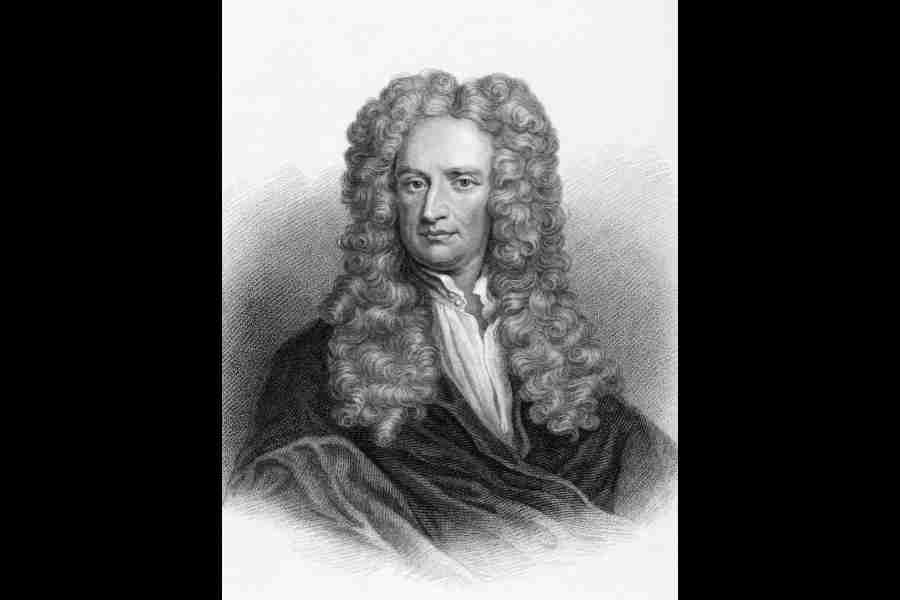Isaac Newton was baffled. He was already famous for discovering how gravity holds the universe together and for using that knowledge to predict the movements of celestial bodies, such as the moon’s path around the Earth. Now, by taking the sun’s gravitational tugs into account, he sought to improve his lunar predictions. Instead, it made them worse.
The setback, Newton’s friend Edmond Halley reported, “made his head ache, and kept him awake so often, that he would think of it no more.” Newton felt his defeat so keenly that he recalled it more than once in his old age.
Today it’s called the three-body problem.
Famous in science and science fiction for orbital perturbations and chaotic phenomena, it’s recently become a concern of atomic experts and military planners. As Beijing rapidly expands its nuclear arsenal, they warn that the world of atomic superpowers is about to escalate to three from two. The outcome, they add, compared with the Moscow-Washington standoff, now 70 years old, could represent a dangerous new kind of unthinkable.
The looming era could encourage “states to resort to nuclear weapons in a crisis,” warned Andrew F. Krepinevich Jr, a senior fellow at the Center for a New American Security, a think tank based in Washington DC, US. He cited the natural instabilities observed by physicists and astronomers asa portent.
Experts say the tripolar age could put human survival at risk. But they also cite a number of three-body lessons from nature — starting with Newton’s — that illuminate the issue and suggest possible ways forward. So far, however, no answer stands out.
In everyday life, groups of twos and threes can seem inconsequential. Two friends joining another brings the total to three. It’s the sum of the parts — what scientists call a linear increase.
But in many aspects of nature, threes have an almost magical power to sow chaos, to become more than the sum of their parts. Scientists call them nonlinearities.
“Our intuitions fail us,” Michael Weisberg, a philosopher of science at the University of Pennsylvania, US, said of the three-body tumult. Steven Strogatz, an applied mathematician at Cornell University, US, agreed: “Threes are inherently problematic. Things get tricky.”
Surprisingly, the jump in disorganisation also shows up in the world’s oceans and atmosphere — in whirlpools and maelstroms, tornadoes and hurricanes. If two of the swirling bodies get close, they move ahead in straight lines or circle each other.
“With three, things immedia-tely get more complicated,” said Michael J. Shelley, a specialist in fluid dynamics at New York Uni-versity in the US. “They can collapse into each other. It gets very disordered and unpredictable. There’s a huge difference.”
Notably, the jump also shows up in human life as groups of three cause social complexities to soar — markedly in young families. Two siblings have one relationship. But a third child results in seven kinds of ties among the siblings — three one-on-one relationships, three one-on-two relationships and one group relationship. Parents, by definition, are outnumbered, and bedlam can ensue.
The Cold War — for all its terrors and crises — avoided nuclear war in part because its mature structures echoed the binary stability that astronomers see in the heavens and that young families see in the relatively simple play of two children.
The era of most serious nuclear tension began as the world’s first thermo nuclear arms were tested by Washington in 1952 and Moscow in 1955. By nature, the weapons could produce blasts 1,000 times more powerful than the Hiroshima bomb. The ensuing arms race fed the Cold War’s fear of mutual annihilation — ridiculed in Dr. Strangelove, the classic 1964 film.
Soon, the antagonists seized on force parity as a way to reduce the risk of conflict. Negotiated accords set Moscow and Washington on roughly equal footings meant to replace war with taut stalemates — as is the case with Russia and the United States today.
“We’re at a stable equality,” said William I. Newman, a professor of astrophysics at the University of California, Los Angeles, US, who aids the University of California’s management of the Los Alamos weapons lab. “Any departure from that will enhance the instability.”
The looming departure is Beijing’s plan to produce 1,500 nuclear warheads by 2035, as the Pentagon estimates. If achieved, the rise would represent a fivefold increase from the “minimum deterrent” that Beijing possessed for more than a half-century and would make it a nuclear peer of Moscow and Washington.
Newman calls the tripolar state “much less resilient” than the bipolar standoff. Even so, three-body theorists see a number of ways that the unthinkable might be avoided.
For instance, Krepinevich, in a Foreign Affairs article last year, argued that Moscow could fade into economic and strategic insignificance, leaving a strong Beijing and Washington to “navigate their way to a new bipolar equilibrium.” The recent armed revolt in Russia drives home not only Moscow’s weakness but the threat of new instability in an atomic superpower.
On a different note, Siegfried S. Hecker, a former director of the Los Alamos weapons laboratory in New Mexico, argued that Washington should aim to deal with the rival superpowers as separate entities.
“I don’t see Russia and China getting together” on atomic strategies, he said. “I see it as two bipolars.” As the Ukraine war rages and Washington has little interaction with Moscow, Hecker added, now is a good time “to work with the Chinese” in building a two-body relationship.
NYTNS











